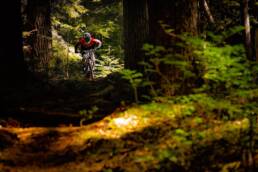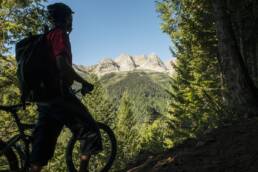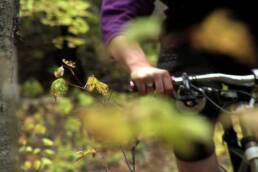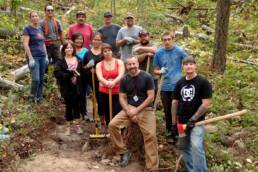Back in the era of teeters, skinnies and rickety ramps galore, mountain-bike stunts defined the sport’s bombast and balls. Now mere forest phantoms, their skeletons speak of olden days and a new school long since dismissed. Words by Mitchell Scott. Photos by Sterling Lorence.
Funny how life likes to circle back on itself. Take the once almighty mountain bike stunt as an example. Twenty years ago trail builders on Vancouver’s North Shore had a problem that needed solving. The shear amount of organic growth in that steep and rocky rainforest made constructing single-track near impossible. Then the light bulb moment: “If we can’t ride through all of these fallen trees, why don’t we ride on them?” Yes, the sport’s first stunts (the very first one was a log ride on a trail called the Fleshy Wound) were purely utilitarian in nature.
Quickly they evolved into cedar slat bridges over gullies and creeks, then to skinnies that rose higher into the forest canopy, then to teeter totters and declivitous drops. The flight path of the stunt revolution was wild, dangerous and, in some cases, extremely artistic.
And then, not so long ago, they died. Or rather, rotted.
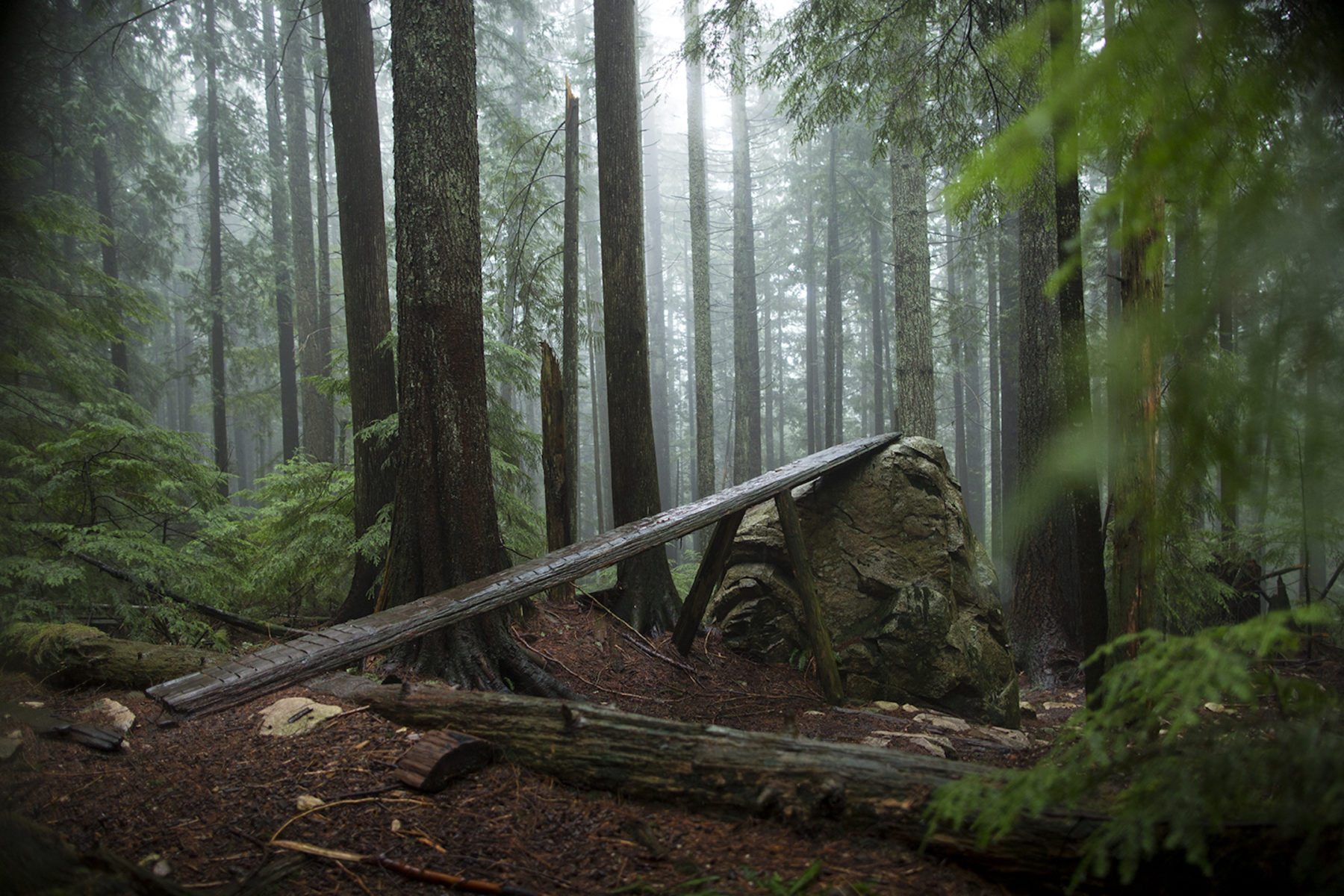
Before that though, stunts made their way on to almost every mountain bike trail in every corner of the world—extreme, freeride or otherwise. “North Shore” riding became the thing: from Florida to Williams Lake, Prague to Bristol. Throughout the 90s and early 2000s stunts were synonymous with the modern mountain bike trail. And, they were a big deal. Not only did they add a new dimension of adventure and challenge to the ride, they caused a massive shit-storm between land managers, trail associations and user groups. Local governments saw them as an endless nightmare of potential litigation. Builders and riders cherished them as forest art. Hikers saw them as aberrations to the landscape. It got ugly. Trail builders went to jail: there was chainsaws, confrontations, sabotage.
But we (mountain bikers) loved them; So much so, we were willing to fight for them. Much of the trail legislation that currently exists in North America stems from land managers wanting to deal with trail building issues created by unsanctioned stunt building. We built them illegally, sometimes in the face of very real consequences. Kids constructed gnarly monstrosities from stolen 2 x 4s and “borrowed” sheets of plywood. Forest artisans learned from trail-building legends like the North Shore’s Todd “Digger” Fiander and the Kootenay’s Riley McIntosh, constructing beautiful, aesthetic, masterfully created bridges, jumps and skinnies.
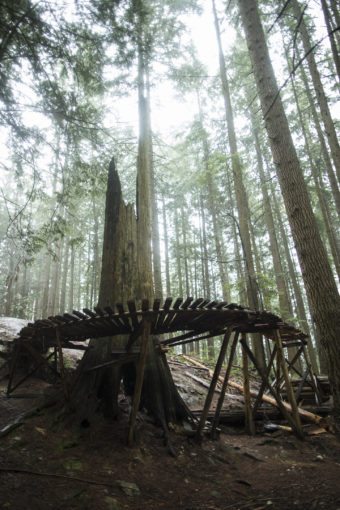
On flatter, less feature-rich locations, stunts transformed otherwise benign landscapes into veritable adrenalin-fests. Some were functional: logs over creeks, slated passageways over swamps, built airs over otherwise impassable terrain. Some, conversely, were totally gratuitous and stupid. But no matter, they were, for a time, intimately tied to trail building and the ride experience. They broke bones and bikes. And, while they’ve stolen hours in the form of annihilated derailleurs and political debate, they’ve given back in countless years of unadulterated fun.
But then they started to fall apart. And break. Many were never properly maintained. Most were ridiculously dangerous and poorly built in the first place. Bikes changed and riders wanted more flow to go with their newfound suspension. So, along came the dirt jump and the berm, “stunts” that were much more palatable to land managers and bike clubs. Easier to maintain, safer, the kids were into it, and the world moved on.
Today, stunts have almost faded entirely from the mountain bike lexicon. We see them, half together, off to the side of trails, with names like Legalize It and Anal Intruder. They cling in the shadows, with their broken supports and missing slats, with all the fade, decay and antiquity that reminds us of a time gone by. Builders rarely create stunts anymore. Instead they’ve turned back to the genre’s original roots when it comes to wood—up and overs, bridges over gullies and creeks, maybe a kicker over a fallen log. The manufactured challenge has now returned to functionality. The high canopy skinny all but a thing of the past, nearly consumed by the rot, rain and a culture growing up, moving on. Funny how life likes to circle back on itself.
Related Stories
Whistler Mountain Bike Park to Expand Creekside Zone
Whistler Mountain Bike Park has just confirmed it will be adding 15 kilometres of new trail to its Creekside Zone by…
The DH Mountain Bike World Cup As Seen Through The Lens Of A Kootenay Photographer
Canadians dominated the junior ranks at the DH Mountain Bike World Cup in Andorra this July. Kootenay photographer…
New Mountain Bike Trail at Island Lake Lodge Opens Today
After four years of construction, the Lazy Lizard Trail at Island Lake Lodge in Fernie, British Columbia, opens today.…
New Kootenay Bike Website
Ahhh, the wonders of Facebook. Check your news feed every once in a while and voila, one of your…
Meet the Minds Behind BC’s Aboriginal Youth Mountain Bike Program
Patrick Lucas is the founder of British Columbia's Aboriginal Youth Mountain Bike Program, which we are huge fans of.…



